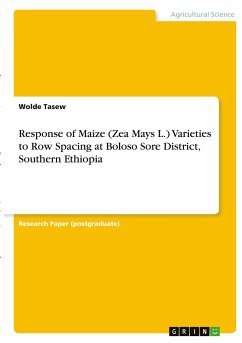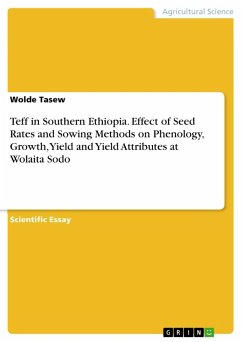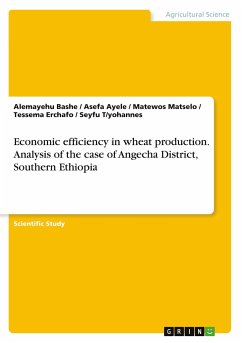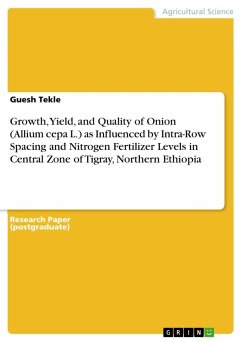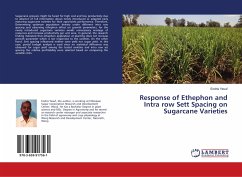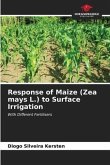Research Paper (postgraduate) from the year 2021 in the subject Agrarian Studies, grade: 1, , course: Agriculture, language: English, abstract: A field experiment was conducted during 2019 main cropping season at Boloso Sore district with the objective of evaluating different maturing varieties and row spacing on yield and yield components of maize. Four row spacing (50, 65, 70 and 80 cm) and three maize varieties (BH-540, BH-543 and BH-547) were tested in factorial arrangement laid out in RCBD replicated three times.This work analyses the study and presents its results.Maize is one of the most important cereal crops in the world. It ranks third in world production after wheat and rice. Ethiopia is the fourth largest maize producing country in Africa, and first in the East African region in terms of production. Presently maize is widely grown in most parts of the world over a wide range of environmental conditions ranging between 50º latitude north and south of the equator. Maizeis an important field crop in terms of area coverage, production and utilization in Ethiopia. It ranks second in area coverage (after teff) and first in total production among cereals. It is grown for its food and feed values and one of the most important staples and cash crops and the main sources of calories. In view of its high demand for food grains and high yield per unit area, maize has been among the leading food grains selected to achieve food self-sufficiency in Ethiopia.The major maize producing regions in Ethiopia are Oromia, Amhara, and SNNPRS in descending order. The national average productivity of maize was 4.09 ton ha-1. In SNNPRS, maize ranked first in terms of area coverage and production among cereals and its average yield was 3.93 ton ha-1. Wolaita zone is one of the most important maize producing zones in SNNPR State. According to CSA report, at Wolaita zone, maize is the first leading crops among cereals in area coverage, and its zonal average yield was 3.01 tha-1.

